Don Siegel’s Invasion of the Body Snatchers (1956)
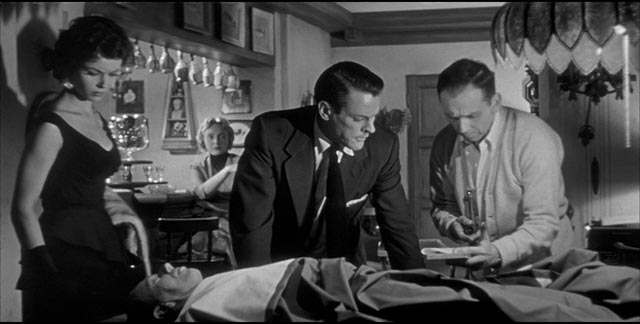
To some degree, I understand the tedious obsession with “no spoilers”. With the overwhelming amount of information available on the Internet, it can be difficult to avoid stumbling across significant plot details. I can understand particularly when it comes to coverage and reviews of new and upcoming releases. But even here, it seems to me that it’s rooted in a fundamental misunderstanding of storytelling and our interactions with narrative. If the impact of a story resides solely in surprise plot revelations, then that story is essentially trivial and superficial. As Stanley Kauffmann put it long ago in his review of Easy Rider: “… when a critic can’t describe an action for fear of spoiling it for a prospective viewer, that is a pretty fair index of the action’s superficiality.”
As someone who writes about movies, I remain maybe half-conscious of this issue, though I don’t believe it’s a writer’s responsibility to “protect” people from unwanted information … it’s up to the reader whether he or she wants to find out what I think about any particular movie. This is even more pertinent when writing about older movies: new viewers are coming along all the time, so should one not mention that “Rosebud” is Charles Foster Kane’s childhood sled? That Rick puts Ilsa on the plane and heads off to war with Captain Renault at the end of Casablanca? That Norman Bates’ mother is dead and he’s the murderer at the bleak motel? Since there are people who have yet to see these movies, the “no spoilers” philosophy suggests that none of these things should ever be mentioned. But how far back do you have to go? Would it be wrong to mention that Othello kills Desdemona? That both Romeo and Juliet commit suicide by mistake?
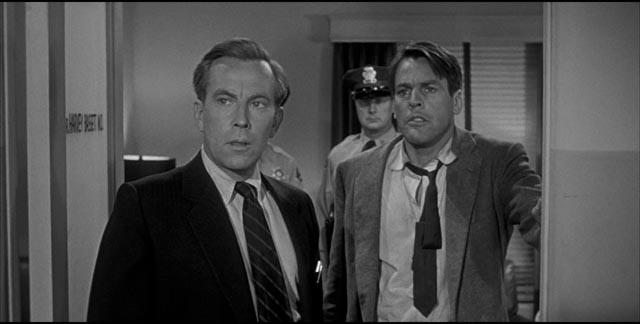
The thing is, if you’re not just making a consumer recommendation about whether or not a particular movie is worth seeing, but rather want to talk about the themes and effects of a narrative, you have to “give away” a certain amount of information. Of course, if this really did impact our enjoyment of a story, we would never return for a second or third or whatever time. In fact, sometimes our familiarity increases our enjoyment. What really matters is the way the story is told, not the superficial plot details.
And sometimes the title itself – and even more likely, the promotion – gives things away. When you come across something called Invasion of the Body Snatchers (1956), you can be pretty sure you’ll be encountering aliens (“Invasion”) who take, or take over, people’s bodies (“Body Snatchers”). The studio-mandated frame imposed on the story puts the urgency of the situation up front, with Dr. Miles Bennell (Kevin McCarthy) ranting to the police and a psychiatrist about the imminent danger we all face. The original conception was to ease into the story so that the viewer would gradually become aware of what’s happening alongside Miles, but the studio execs felt that the last thing a low budget exploitation movie needed was subtlety. (McCarthy’s preferred title was “Sleep No More”, which gives away a lot less.)
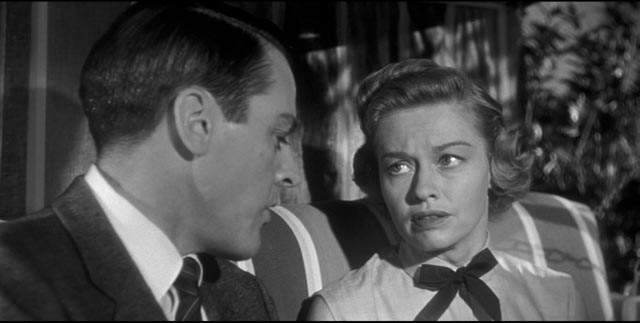
So there’s no surprise about what’s happening in the small California town of Santa Mira. Chances are that even in the mid-1950s, there were people in the audience who had already read Jack Finney’s novel The Body Snatchers (originally serialized in Collier’s Magazine in 1954). I read the novel long before I ever had a chance to see the film (as part of the Manitoba Planetarium’s summer sci-fi series in 1973), so I was already completely familiar with the story, and yet I was eager to see that story in this other medium. What mattered was how the story I knew had been transferred to the screen.
And despite any caveats about the degree to which that frame compromised the story – by undermining the slow build of tension and leading to a potentially “happy” ending which dilutes the relentless paranoia – Don Siegel’s telling (from an expertly constructed script largely written by Daniel Mainwaring, author of a number of key film noirs, including the essential Out of the Past [1947]) is brilliant in its naturalistic understatement.
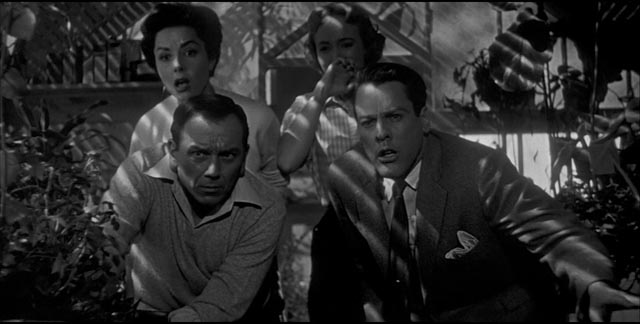
In watching the film again on the Olive Films Signature Edition Blu-ray, two things really stood out for me. These were not particularly original insights – after all, I’ve seen the film many times in various formats. First, Invasion of the Body Snatchers is atypical in Siegel’s filmography. It’s his only fantasy film and there’s nothing anywhere else in his work to indicate an affinity for the fantastic. In early works like Riot in Cell Block 11 (1954), he uses a raw, almost documentary-like realism, while in later films that evolves into a classic Hollywood “realism” rooted in our shared experience of movies rather than the real world. It could be argued that he did return to the fantastic once more with the Gothic-flavoured The Beguiled (1971), but that was more obviously rooted in genre conventions; Body Snatchers approaches its fantastic elements with the same documentary detachment Siegel had applied to Riot two years earlier. The film is all the more chilling for this matter-of-fact treatment.
The other important thing comes from Mainwaring’s script, which rather than playing up the sci-fi elements focuses on the psychological horror. Rather than radioactive mutants and giant insects – and despite a couple of judiciously handled effects sequences showing the pods at work – the film sticks to the characters’ growing fear that they are in danger of losing their own fragile identities. Mainwaring ties this fear closely to the central themes of post-war noir, expanding it beyond the original sense of displacement caused by the war and grafting it onto the rapid social changes of the ’50s, in particular the effects of mass migration from cities to newly developed suburbs.
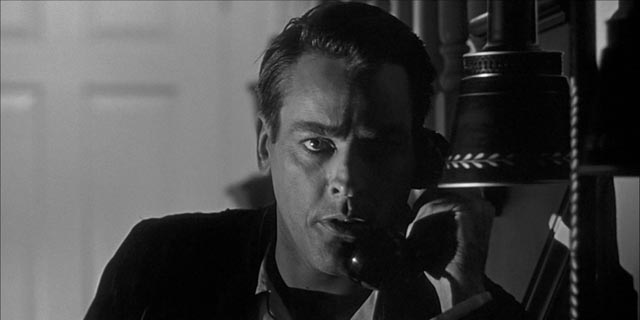
When men returned from the war, they found that society had moved on without them. Not only did those at home have no real understanding of the horrors these men had experienced, the liberating effects of war work on women threatened men’s sense of their own masculinity. So much of noir revolves around male vulnerability to strong, duplicitous women that the genre’s central driving force seems to be a fear of castration – after the hyper-masculinity of combat, these men returned to a transformed world where their masculinity was in question.
With the rise of the suburbs and their emphasis on individual nuclear families and the consequent economic demands placed on working men, these insecurities metastasized. After the communal effort of the war, consumer capitalism took hold with a vengeance, its deliberate strategy to isolate individuals; identity became rooted in the acquisition of material possessions in competition with others. The stripping away of a communal identity increased insecurity and material gains were an illusory substitute – each unsatisfying new purchase demanded another which proved just as unsatisfying. Rampant consumerism, by its very nature, undermined one’s sense of selfhood. What sense of shared identity the post-war world offered was material rather than social. With less interconnectedness (the very idea of the suburbs was to separate people from their neighbours in contrast to the enforced close living imposed by urban centres), and more economic demands heaped on individuals already grappling with insecurity, the new social order was primed for the generation of fear and distrust.
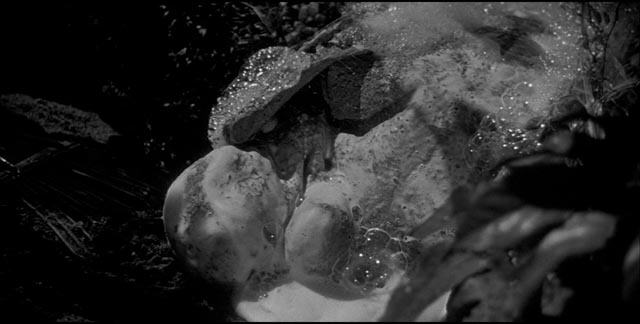
After the hysterical prologue, Invasion of the Body Snatchers begins with smalltown doctor Miles returning early from a medical convention, arriving by train the way a returning serviceman might have reentered his hometown. Although in this case he has only been away a few weeks, something is different about Santa Mira. His receptionist Sally (Jean Willes) picks him up and immediately tells him that something is affecting all his patients. On the drive back to the office, they almost hit a small boy, Jimmy (Bobby Clark), who is running in panic from his mother. Later, the boy is brought to his office by his grandmother and we hear for the first time the underlying fear creeping through the town: he insists that his mother is not his mother.
Miles hears something similar when Becky (Dana Wynter), an old flame, visits the office. She too has been away and just returned to town a couple of days earlier. She tells Miles that her cousin Wilma (Virginia Christine) insists that her father isn’t her father. In both cases, the fearful person says that the person they fear looks and sounds and acts like the real person, that he or she has the same memories and behaviours … but is nonetheless not the real person. Something indefinable has changed.
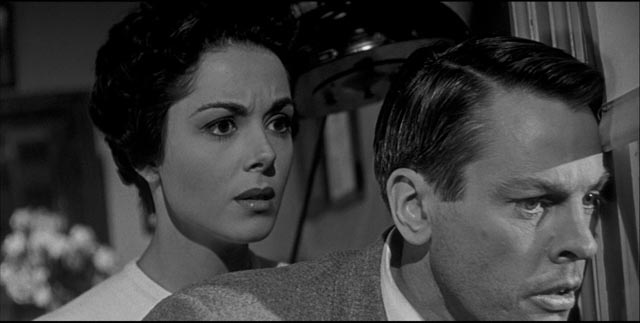
Miles’ colleague Dr. Danny Kauffmann (Larry Gates), a psychiatrist, attributes what’s happening to a kind of mass hypnosis, a malady rooted in the stresses of modern life. At first Miles is inclined to believe him … until he gets a call from old friends Jack (King Donovan) and Teddy Belicec (Carolyn Jones), who have found a strange body in their home. An examination reveals that this body is complete yet somehow “unfinished”, unused. As Miles and his friends dig deeper into the mystery, gradually discovering that alien seed pods are producing exact duplicates of the town’s inhabitants, which absorb memories and personalities and yet lack the spark of individuality, it becomes apparent that the invasion is extensive, that they can no longer trust anyone. (Finney’s novel is an obvious variation on the central theme of John W. Campbell Jr.’s 1938 story “Who Goes There?”, basis for the various movies called The Thing [1951, 1982, 2011], here amplified by having the events occur not in isolation, but rather in the midst of the larger population. Of course, there have been multiple adaptations of Finney’s story as well – 1956, 1978, 1993, 2007.)
There is no antidote to the plague of alienation. The pods take possession during sleep and there’s no way that sleep can be avoided indefinitely. Once taken over, the replacements have only one drive – to absorb into the alien community anyone not yet taken over. (Although it’s only suggested, the pods seem to have a shared hive mind, like some kind of proto-Borg.) Miles and Becky fight as long as they can, but their fate appears inevitable. The film was intended to end with the camera pulling back from Miles staggering among the speeding traffic on a busy highway yelling at the oblivious occupants of the cars that “you’re next!” But that studio-mandated frame promises that there may still be time to stop the invasion, a promise belied by the all-too-convincing depiction of the invasion’s success in Santa Mira.
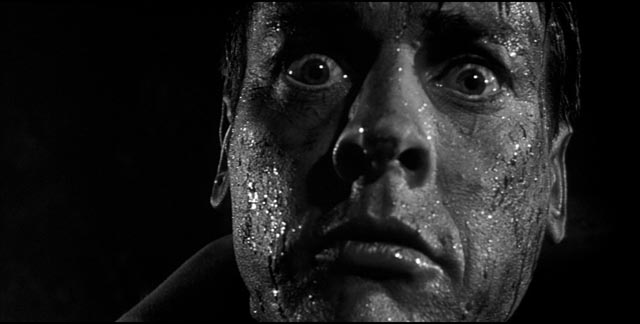
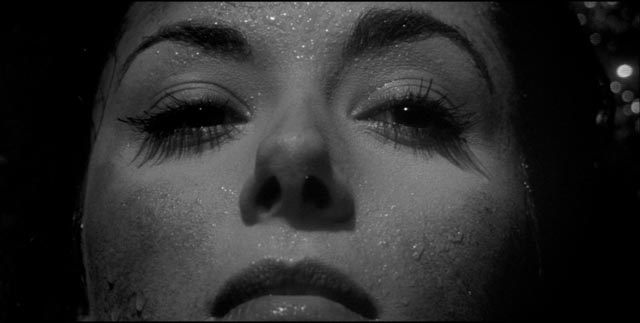
Almost since the film’s unheralded debut in 1956 (it was seen, if at all, as just another sci-fi B-movie at the time), its understated naturalism has left it open to widely variant interpretations – either as a warning of the impending Commie takeover, an expression of Red Terror hysteria, or as an equally pointed warning about the dangers of mindless conservative conformity, exposing the irrational fear behind the anti-communist hysteria which still gripped the country a decade after the end of the war. But while either of these positions may seem plausible, the film is less political commentary than social and psychological dissection of that great shift towards a redefinition of human purpose not as a communal aggregate but as an atomized collection of single-minded consumers, isolated individuals who are paradoxically absorbed into a conformist group compelled to serve a shared external imperative – not Communism, but consumption.
Whatever the virtues of the various remakes, Siegel’s original has a narrative purity rooted so firmly in the time of its production that it is still as fresh and pertinent as it ever was, its unadorned naturalism completely undated. Watching it again, more than sixty years after it was first released, it remains suspenseful, disturbing, exciting … even though every detail of its story is familiar and fully known in advance. It’s a great story that can be experienced repeatedly without any loss of pleasure. In fact, familiarity makes it possible to discover new details and nuances with every subsequent viewing, because of the superb way Mainwaring and Siegel tell the story.
*
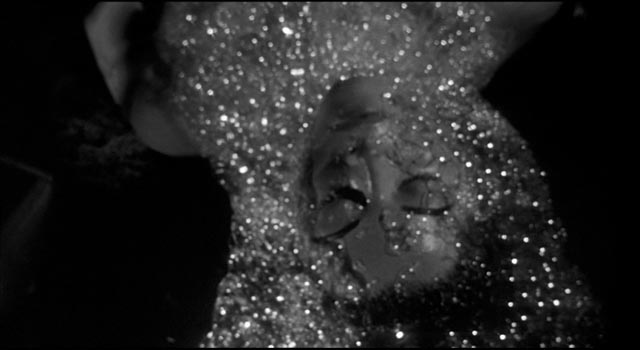
With their Signature release, Olive Films have done Invasion of the Body Snatchers full justice for the first time on home video. The disk is packed with extras, including two commentary tracks – stars McCarthy and Wynter in conversation with director (and fan) Joe Dante; and a new critical track with film historian Richard Harland Smith – and more than half a dozen featurettes about the film, director Siegel and producer Walter Wanger.
The transfer is excellent, with strong contrast and enough grain to give the image an authentic film-like texture. If at times close-ups feel a tad cramped, that’s a result of the well-known history of the film’s aspect ratio. Originally shot flat, the studio decided to convert it to the widescreen Super Scope format, which involved severely cropping the top and bottom of the 35mm frame to produce a 2.00:1 ratio. Because of this, original television and early home video versions were severely compromised as they were produced by panning-and-scanning the already cropped image (instead of going back to the original full-frame, open-matte negative, which apparently vanished long ago), losing a lot from the sides in addition to the top and bottom of the frame.
It’s interesting to see Olive, formerly a bare-bones company, stretching into Criterion-quality territory with their Signature editions – though they are a bit pricey.
Comments
I’ve always enjoyed that movie. I bought the previous Olive Blu-ray. There are no extras on that disc and I doubt that I’ll buy the Signature version. I’d rather spend that money on something I don’t already have. I like quite a few of the titles in the Olive Film catalog, they have a nice eccentric list of titles. I hope they can keep in print some good films that the studios seem to be willing to abandon to streaming.
I probably double-dip more than I should. I still fairly regularly upgrade to Blu-ray for movies I really like. I also had the earlier Olive Blu-ray of Body Snatchers, but the new edition has really substantial extras, so I couldn’t resist. Same for Olive’s Sigmature edition of Nicholas Ray’s Johnny Guitar, which like Body Snatchers has a considerable image upgrade (also the correct aspect ratio, 1.66:1 instead of the earlier 1.33:1). Also like Body Snatchers, the Ray disk has a ton of new extras – a commentary and more than an hour of critical featurettes. That’s usually the spur that pushes me to upgrade. It’s nice to have an improved transfer, but that alone doesn’t usually get me to buy again.
Really great article. I liked your commentary on the shift to a consumerist culture during the 1950’s, and how that fit into the film’s themes. It was a rather unique interpretation. I’m glad that someone else noticed the parallels between “Invasion of the Body Snatchers” and “The Thing” (the 1982 iteration, specifically). Comparatively, “Body Snatchers” seems more tailored to the specifically suburban American audience of the time, as the film displays such a takeover occurring (literally) within people’s backyards.